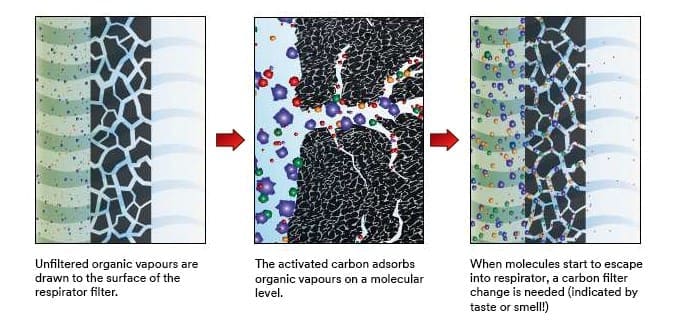
Table of Contents
Nowadays, various types of water filters have become quite popular. Since not only big industries are investing in it but also homes. With the sanitary issues that have been on-the-rise today, providing ourselves with clean and safe drinking water has become very important to remain healthy.
A lot of people might think that America’s water filtering facilities are enough to give us clean drinking water but that is not always the case. With diseases constantly spreading here and there, it is important to make sure that everything we consume is 100% clean.
With that said, this is where water filtration systems make their mark. Although it might be considered a hefty investment, you can enjoy a lot of benefits from owning your water filter. You can either have a countertop or an under-the-sink water filter or even one that comes with your refrigerator.
Most water filters use activated carbon filters or activated charcoal filters to eliminate compounds that can affect the taste, smell, and even the color of your water. As harmless these issues seem, some chemicals can react to metal producing hazardous substances that can harm our health.
An activated carbon filter is a type of filter that mainly detoxifies contaminants found in tap water. It’s a barrier that divides the filtered water and the contaminants during the process. This article will provide you the necessary information you need to know about activated carbon filters.
How Activated Carbon Filters Work
Activated carbon filters remove the existing contaminants found in water through adsorption. Adsorption makes the particles found in the water stick to the filter making them unable to pass through the filter.
Organic compounds are stuck on the surface of carbon filters to separate them from the water. Carbon filters are extremely porous and have a large surface. The pores act as the pathway for the water to seep through while the surface traps the foreign particles producing contaminant-free water.
The pores are measured in microns to ensure the effectiveness of the filtration. The quality of filtration greatly depends on the size of the pores. Smaller microns produce a finer filtration quality.

Activated carbon filters remove the existing contaminants found in water through adsorption. Adsorption makes the particles found in the water stick to the filter making them unable to pass through the filter.
Organic compounds are stuck on the surface of carbon filters to separate them from the water. Carbon filters are extremely porous and have a large surface. The pores act as the pathway for the water to seep through while the surface traps the foreign particles producing contaminant-free water.
The pores are measured in microns to ensure the effectiveness of the filtration. The quality of filtration greatly depends on the size of the pores. Smaller microns produce a finer filtration quality.
Water pressure and a low flow rate are also important factors in making the process successful. Also, time plays an important part in the whole filtration process. Since it takes some time for the foreign substances to cling to the carbon.
The more time we give it during filtration, the better the results we get. The activated carbon filters are activated through heat or steam. Once activated, the pores begin to open and increase the surface area to increase its capacity to hold contaminants.
Carbon can also be activated with two types of methods. The first one is chemical activation.
This is when the carbon is filled with a dehydrating agent and looks like a paste. The paste is then heated to 500 to 800 degrees Celsius to activate the carbon.
The other method is called Steam activation. This method activates the carbon through utilizing the hot gases which require 800 to a 1000 degrees Celsius to convert the carbonized material to gas. Air is then used to expel the gases without affecting the carbon.
Components of An Activated Carbon Filter
- Bituminous coal: A relatively soft type of coal that contains a tar-like substance like bitumen or asphalt.
- Wood-based media: It contains meso- and macropores that create low density. It is also renewable and does not require mining but is not always available. It’s activated carbon takes time to mature and ready for filtration.
- Coconut shell media: Micro pores have more density in coconuts shells which contain 50 % more micro-pores compared to bitumen coal. Are more efficient in removing contaminants that are difficult to detoxify in water.
In other words, coconut shell media has much more quality than other activated carbon media. It is also renewable and can grow throughout the year compared to the wood-based media. And lastly, it produces much cleaner water.
What are Charcoal Filters?
Charcoal filters are often called carbon filters but are not always the same type of coal. Charcoal filters and carbon filters are the same things. People tend to use the term charcoal filter and mistakenly think that carbon and charcoal filters are different.
Types of Activated Carbon Filters
- Granular Activated Carbon (GAC): These contain loose granules of activated carbon to allow the water to flow in one direction with ease while still in contact with the carbon. But, contaminants can still pass through.
- Carbon Block Filters: Contains fine granules held together by bonding agents. Has more surface area to hold contaminants but the water flow is much slower compared to GAC but is more efficient in detoxifying contaminants.
- Radial Flow GAC Carbon Filters: Has the surface area of a Carbon Block Filter and the flow rate of the GAC filter. The water flows to the side of the cartridge radially like the carbon block but due to the composition of granules, its flow rate is similar to GAC.
Are Charcoal Water Filters Safe/Are Carbon Water Filters Safe?
Yes, they’re safe to use. Carbon Filters are rated for having CTO removal and sub-micron carbon blocks to prevent any contaminants to pass through except for water. Any activated carbon block filters with sub-micron can be rated the highest spot in the rankings.
This is because its filtering performance is top-notch and can remove additional particles through mechanical filtrations. Mechanical Filtration is like using a sifter that they prevent any foreign particles to pass through and allow the liquids to flow.
Usually, the measurement of the carbon block filter’s pores is smaller than one micron. Small enough to prevent small cysts from entering.
It is important that the carbon filter you use be tested and rated for material safety.
Contaminants Activated Carbon Filters Eliminate
Most of these contaminants need a certain certification of filter grade of activated carbon in order to eliminate these particular contaminant types. If you want your carbon filter to eliminate certain types of bacteria or cysts, a certain grade or certification must be met.
Here is the list of contaminants that can be eliminated by using an activated carbon filter.
- Chlorine
- Mercury
- Pesticides and Herbicides
- Trihalomethane
- Bad tastes and odors
- Sediments
- Volatile Organic Compounds
- Radon
- Lead, Arsenic, Iron, Cysts, Other Heavy Metals (If pores are smaller than one micron and go through Mechanical Filtration)
Alternatives to Activated Carbon Filters
Aside from activated carbon filtration, there are also a lot of different alternatives that can produce similar or even better effects. Carbon filters can also be incorporated or combined with these filtering methods to produce better quality water.
Activated Carbon vs. Sediment Filters
Sediment Filters are mechanical and mainly deal with dirt and other forms of debris found in water. Meanwhile, carbon filters deal with organic compounds, taste, and odor. The sediment filter’s pores can let water flow but can’t let anything one micron larger to pass through.
Activated Carbon vs. Ceramic Filters
Ceramic Filters are another type of Mechanical Filters with small pores enough to block some organisms. Carbon is often blended or added into the core of the ceramic filter to increase it’s filtering capabilities to increase the chance to filter other chemicals and debris.
Activated Carbon vs. Reverse Osmosis Systems
Reverse Osmosis is another type of mechanical filter. The filter is more on utilizing a semipermeable membrane that aids in separating inorganic compounds and other forms of contaminants from the water.
This system may take up to several hours to collect a gallon of water since the water takes time when it is treated for safe use.
Why Should You Use Carbon Filters?
The installation of the filter can be placed on sinks, showers, and the point-of-entry. This provides the clients with safe water at any time of the day. Though filters need to be replaced every six months to maintain the satisfaction of having clean water.
This is also very excellent for removing chlorine and detoxifies other foreign particles to promote good health. But some cases would reduce other chemicals found if filtered mechanically. So, that’s why we need to use certain filters to eliminate the contaminants.
Carbon Filter Maintenance
Replace the filters every six months to a year. Don’t wait for too long in changing the filters or it may result in worsening your water condition and may take a while to get it treated and back to it’s desired taste and odor.
Prolonged use may eventually break down the carbon and flow into your water system at home.
Pros and Cons: Are Activated Carbon Filters Effective?
Carbon filters offer a cheaper way of having clean water. And, its benefits and features vary from different brands. But as much as it has a lot of advantages, they also carry some disadvantages.
But despite their disadvantages, you can rest assured that carbon filters do great in filtering out their respective contaminants. Here are the pros and cons on investing on activated carbon water filters.
Pros:
- Removes Bad odors, taste and reduces chlorine
- Removes some organic compounds
- Promotes good health and safety
- Prevents Health Hazards
- Attracts pollutants when filtered
- Low cost and easy maintenance
Cons:
- Filter replacements are frequent
- May not filter all chemicals
- Are not effective against pathogenic bacteria/ organisms







